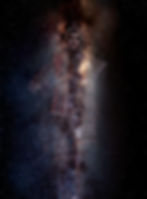
The Creator, Lord of the Sky Bernardo Vargas, Tarabuco, Bolivia

Lord of Thunder. Fructoso Flores, Collpapampa, Bolivia,
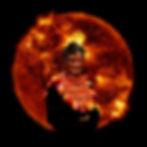
Father Sun. Valerio Yucra, Presto, Bolivia
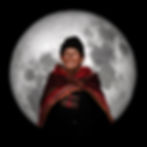
The MOther Moon. Casimira Yucra, Angola, Bolivia

The Mother Earth and the Soul of the Earth (The Earthquake). Silveria Mamani and Valentin Champi. Pisili, Bolivia.

The Condor. Julio Velázquez, Laja, Bolivia.

Spirit of the mountain. Ricardo Th´ica, Paredón, Bolivia.

The Volcano. Basilia Pachacopa and Leucario Fernández. Maragua, Bolivia.
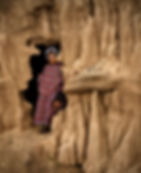
The Evil. Eusebio Flores, Candelaria, Bolivia.
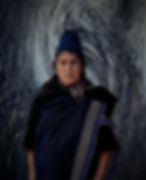
The MOther of Waters. Julia Kalli,Jatun Churicana, Bolivia.
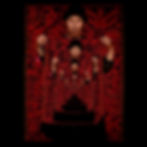
The fabric of the underworld. Sofía Cruz, Maragua, Bolivia.
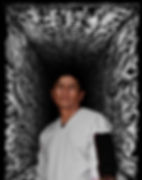
The beings of the dream. Juan Carlos Ventura. Pueblo Jalq´a, Maragua, Bolivia.

The Weaver. Celestina Wamani, Collakamani, Bolivia.
The Yampara have populated the central region of Bolivia since time immemorial. They have developed an outstanding culture from many points of view and have seen a sequence of empires (Aymara, Inca, Spanish) parade through their lands, which, to a certain extent, have imposed their languages and cultures, but have not managed to erase the powerful Yampara identity. Their beliefs amalgamate the deities that this dynamic has left in its wake, but the strength of their identity transcends time. This work was carried out among the descendants of the ancestral Yampara nation, who today self-identify as Yamparas and Jalq'as, in the department of Chuquisaca, Bolivia.
The Andean cosmovision conceives the universe as subdivided into three planes or pachas: the Hanaq Pacha or world above - the sky - dominated by Viracocha, the Creator, and by the stars and celestial phenomena, such as the Tata Inti and Mama Kolla. The Kay Pacha or world here, corresponding to the earth's surface, dominated by Pachamama, Mother Earth, and the Apus, Achachillas or Mallkus, the spirits of the mountains and peaks. And the Ukhu Pacha, the world below, or underworld, dominated by the Supay or Tata Pujllay - whom the Christian church reduced to the role of the devil - but who, in reality, is a deity with great genetic power and giver of fertility, plants, animals and minerals, an extremely active and stimulating - but dangerous - character capable of granting and taking away fortune and life. He is also accompanied, reigning in the underworld, by Mama Qocha, the mistress of the underground waters.
Texts of the images:
From Hanaq Pacha, the Firmament:
1- Viracocha, Lord of Heaven. He is the Creator, the father of all gods, the Master of the Universe. He is the oldest deity and has been present in all Andean cultures. He is the Old God, the eternal radiance, the maker of time and the cosmos.
2- Tata Inti, the Father Sun. He is a supreme god, giver of light, energy and life. His annual cycle defines the vital sequence of the Andean culture. All agricultural and religious activities are determined by the position of Tata Inti.
3- Mama Killa, Mother Moon. She is a goddess associated with the menstrual cycle, marriage, gestation and harvests. Her phases recall the different stages of the cycles of life and fertility.
4- Illapa, Lord of the Lightning
One of the oldest deities, related to severity and punishment, but also to healing and power. He is the deity who controls the weather, as he controls all the atmospheric phenomena generated in the celestial vault. As the fall of the celestial liquid that fertilises the earth depends on him, he is related to agriculture. However, given the potency and fulminating power of lightning, Illapa is also linked to war.
From the Kay Pacha:
5- Pachamama and Pachacámac, Mother Earth and the Soul of the Earth.
Pachamama represents, par excellence, the maternal archetype, in terms of care, protection and sustenance of all beings. She is the one who produces everything that nourishes us. It is fecundity and care. But it also refers to the extension of the earth and to matter itself, from which life and food arise.
Pachacámac, the husband of Pachamama, is the one who animates the earth, a chthonic god, master of earthquakes and tremors, but also of movement in general. Pachacamac is highly respected and powerful, you cannot look him directly in the eyes.
6- Mallku, the Condor, the summit, the great mountain.
The term Mallku has multiple meanings, but all of them are related. It represents the summit, both geographically and hierarchically. ‘Mallku Kunturi’, means “the lord of great height”. It symbolises the highest authority, but also Mallku is the spirit and strength of the mountains and a powerful presence in the heights, which finds its representation in the condor, a majestic and respected animal, since Mallku is also the Kuntur Mamani (the habitat space of the condors located in the high rocky mountains). He represents the source of life in the mountains, since the water that gives life falls through his peaks during the thaw and rainy seasons. As a lord of great height, Mallku Kunturi becomes the link between the life of men and women in the Aka Pacha (time and space of today) and the Alax Pacha (time and space of the afterlife). On the more everyday level of social life, the Mallku Kunturi is the link between men and women and the apus (the sacred hills) or the spirits and life forces of the mountains.
7- Achachilla. The Spirit of the Mountain.
The Achachilas are, together with Pachamama, the representation of Mother Earth. They incarnate the ancestors of each community, who upon their death ascend to the highest peaks around them, thus fulfilling a protective and vigilant function for their descendants. They also represent the personification of the mountains and all the power attributed to them. They are the guardians of places.
The word achachila, in Quechua, means ‘miracle’, ‘marvellous thing’, ‘astonishing’ or ‘a prodigy’.
8-Tunupa. The volcano.
Tunupa is the name of a volcano located on the margins of the salt flat to which it also gave its name - although it is popularly known as Salar de Uyuni. This volcano has been sacred since time immemorial and has therefore embodied representations of the divine in a double deity: male and female. In ancient times, Tunupa was a powerful and wrathful god, related to lightning, to the power of the eruption, in charge of imposing order. He was an old man, a supreme god who cured the sick but also punished those who did not obey him. In the myth, the god is expelled into the sea and dies.
The goddess Tunupa, on the other hand, is a young woman, conceived as a domesticating agent, who introduced culture and a sense of sociability. From her derived the cultivation of quinoa, the creation of the hearth and textiles. The white salt is the result of the milk spilt by the goddess and represents one of the most important elements of human life, in which domestic practices and the rules of sociability of a society in coexistence and harmony stand out.
In the words of Jimena Portugal, ‘The two characters contrast symmetrically, one representing the powers of nature and the divine while the other represents the powers of culture and everyday life. One punishes and the other rewards. The one dies and transits while the other transits and survives forever’.
From the Ukhu Pacha:
9- Supay. Lord of the Underworld
He is a powerful deity and generator of life and fortune, but also of death and failure. He is the trickster, a brilliant character who cannot be reduced to the pigeonholed role of the Devil, as rebelliousness is only one of his many aspects. His union with Pachamama is what generates all that lives and exists on earth.
10- Mama Qocha. The Mother of the Waters.
She is the owner of the most precious liquid, which flows above and below the earth. She is essential for the generation of life and food, she is the source, the supplier, the spring, the lagoon, the torrent. Its flow determines where and when things grow.
11-The Khurus. Dream creatures.
For the Jalq'a culture, dreams have a profound meaning and are intrinsically linked to their cosmovision. Dreams are considered portals to the Ukhu Pacha, a sacred space inhabited by mythical creatures called ‘Khurus’. Dreams are seen as a form of communication with the underworld, where the Khurus and other spiritual beings manifest themselves.
This dream world is a source of inspiration for their weavings, where they embody the images and symbols they see in their dreams.
The Khurus, wild and enigmatic creatures, may appear in dreams, conveying messages or omens. These nocturnal visions are a way for the Jalq'a to connect with the spirit world and receive guidance. The weavers weave the figures and scenes they see in their dreams into their work, creating representations of the Ukhu Pacha and its inhabitants.
12- The Aqsu. The weaving of the underworld.
Weaving is an ancestral art with multiple layers of meaning in Andean cultures. But the aqsu of the Jalq'a women have a particularity that differentiates them from all their neighbours: the unusual creatures that populate them belong to the world of dreams, to the unconscious, to the Ukhu Pacha or Quechua underworld, presided over by the Supai, the Devil. Each aqsu requires months of constant work, in which the author captures the images that appear in her dreams, in her visions, in those moments when consciousness is obscured - or illuminated - by that other world that populates us inside, but which we only perceive in borderline situations. The work must be continued daily, so that these ungraspable creatures do not escape from the mind, nor from the fabric that they will populate, thread after thread, layer after layer, dream after dream...
13- Awakkna. The Weaver.
The art of weaving goes far beyond beauty and utility. It constitutes a language full of symbols and meanings, which provides identity codes through figures, colours, patterns, fibres and shapes, configuring clothing, that expressive space through which people and their masks are shown throughout the changing passage of the year and the seasons, the day and the night, the sacred and the profane, the everyday and the festive. The weavers have in their hands the capacity to construct this visual world, which is both scenography and act.